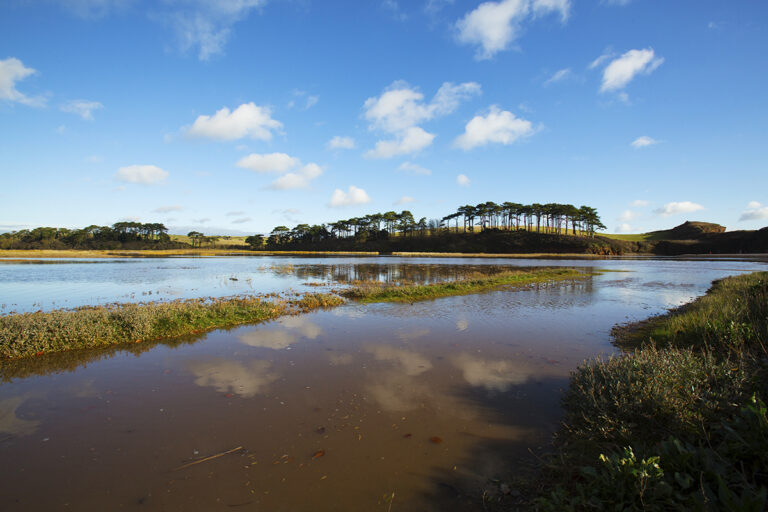Eight-month restoration of ancient Woodbury Castle hill fort nears completion
An extensive project spanning eight months to restore East Devon’s 2,500-year-old Iron Age hill fort, Woodbury Castle is nearing completion.
Woodbury Castle is characterised by its deep earthwork ramparts enclosing a level interior of approximately two hectares studded with deciduous trees, and its setting at the highest point of the East Devon Pebblebed Heaths on Woodbury Common.
It is a nationally important archaeological site and prominent landmark owned by Clinton Devon Estates and managed by the Pebblebed Heaths Conservation Trust. The site was put on Historic England’s at Risk Register several years ago when it became apparent that the area was suffering, predominantly from erosion due to a high volume of visitors as well as damage from tree roots and scrub growth.
In 2016, the Trust secured funding from Natural England’s Countryside Stewardship scheme to undertake the extensive restoration work that will result in its eventual removal from the at Risk Register. Since September, contractors have been working tirelessly to restore the site with work involving stabilising the impressive ramparts and improving access.
The collaborative project has benefitted from additional funds granted by Historic England. Devon County Council’s Historic Environment Team and the Devon Archaeological Society have also been involved with the design work.
A short film commissioned by the Pebblebed Heaths Conservation Trust provides an insight into the hill fort’s restoration journey and includes drone footage giving a rare bird’s eye view over the site and its magnificent setting with views over Lyme Bay. The film also includes an artist’s impressions of what the site likely resembled 500 – 300BC based on evidence from earlier investigations.
Kim Strawbridge, Site Manager for the Pebblebed Heaths, explained: “There were a number of elements to the project including improving access to and across the site which involved installing two new sets of steps. The main part of the project was repairing the earthen ramparts. This was predominantly carried out by the contractors and involved significant amounts of earth being moved onto the site from a local quarry with matching geology, to shore up the banks. The removal of several trees across the site was also necessary in order to let more light in so grass and ground flora can flourish and in turn protect the earth works for years to come.”
The conservation Trust’s regular volunteers as well as the local community and numerous school groups have also provided valuable support, filling thousands of sandbags and sowing grass seed. Ongoing public support is deemed crucial for the hill fort’s future preservation and the hope is to establish a volunteer archaeological monitoring scheme giving local people the chance to assist with its ongoing conservation.
[embedyt] https://www.youtube.com/watch?v=dMPh2DW9Tqc[/embedyt]
Woodbury Castle became a Scheduled Monument in 1923; these are prehistoric monuments recognised as deserving of state protection. Evidence from geophysical surveys and excavations when the road across the heaths was realigned indicate that the original hill fort settlers would have and number of round houses and a structure thought to have been a grain store. Improved interpretation will be established at the site to promote understanding of its national importance.
Kim added: “It is hugely important that we do all we can so the monument can be removed from the at Risk Register. We would ask that people refrain from walking on the repairs so it is kept in good condition for people to enjoy into the future.”
For more information and visit enquiries phone the Estate’s office on, 01395 443881.





